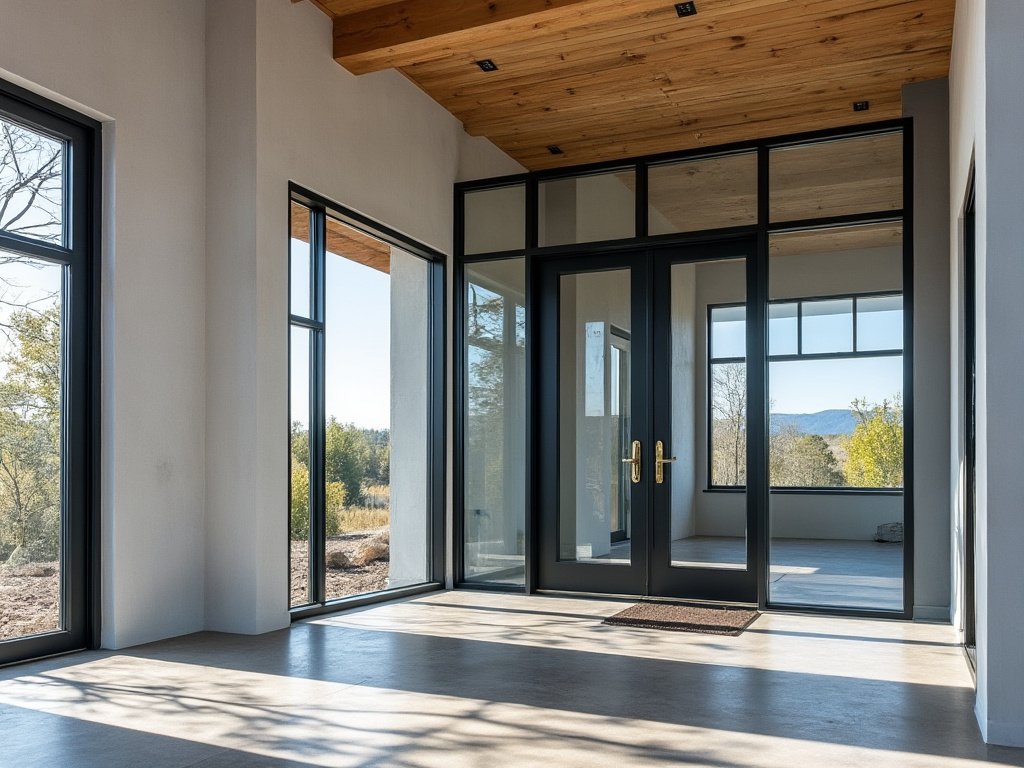
Understanding Energy Efficiency Standards for Modern Building Materials
In today's world of increasing energy consciousness and stringent building codes, understanding the energy performance of windows and doors is crucial for homeowners, architects, and builders alike. The National Fenestration Rating Council (NFRC) plays a pivotal role in this arena, providing standardized ratings for windows and doors, including those made of steel. This article delves into the world of NFRC rated steel windows and doors, offering insights into what these ratings mean, why they matter, and how they can influence your building or renovation decisions.
What is the NFRC?
The National Fenestration Rating Council is an independent, non-profit organization that administers a voluntary program to rate and certify the energy performance of windows, doors, and skylights. Founded in 1989, the NFRC has become the go-to authority for fenestration product performance information in the United States.
The NFRC's primary goal is to provide fair, accurate, and credible ratings of fenestration product energy performance. These ratings allow consumers to compare products and make informed decisions about their purchases. For manufacturers, NFRC certification is often necessary to meet building code requirements and to participate in energy efficiency programs.
Understanding NFRC Ratings for Steel Windows and Doors
NFRC ratings cover several key aspects of energy performance. For steel windows and doors, these ratings are particularly important due to steel's unique properties as a building material. Let's break down the main components of an NFRC rating:
- U-Factor: This measures how well a product prevents heat from escaping a building. Lower U-factor ratings indicate better insulating properties. For steel windows and doors, achieving a low U-factor often involves advanced design features like thermal breaks and high-performance glazing.
- Solar Heat Gain Coefficient (SHGC): This indicates how much solar radiation is admitted through a product. Lower SHGC ratings mean less solar heat is transmitted. Steel frames can be designed to accommodate various glazing options to optimize SHGC for different climates.
- Visible Transmittance (VT): This measures how much light comes through a product. Higher VT ratings mean more natural light is transmitted. Steel windows often excel in this category due to their ability to support large glass areas with minimal frame obstruction.
- Air Leakage (AL): This quantifies how much air will enter a room through a product. Lower AL ratings indicate better airtightness. Steel windows and doors can achieve excellent air leakage ratings when properly designed and installed.
- Condensation Resistance: This measures how well a product resists the formation of condensation. Higher ratings indicate better resistance. Steel windows with thermal breaks can significantly improve condensation resistance.
The Importance of NFRC Ratings for Steel Windows and Doors
NFRC ratings are particularly significant for steel windows and doors for several reasons:
- Energy Efficiency Validation: Steel is known for its strength, but it's also a good conductor of heat. NFRC ratings demonstrate how modern steel window and door designs overcome this challenge to provide excellent energy performance.
- Code Compliance: Many building codes now require NFRC ratings for windows and doors. Having these ratings ensures that steel products can meet or exceed these requirements.
- Consumer Confidence: NFRC ratings provide consumers with standardized, reliable information about the energy performance of steel windows and doors, allowing for informed decisions.
- Qualification for Incentives: Many energy efficiency incentive programs require NFRC ratings. Certified steel windows and doors can qualify for these programs, potentially offering cost savings to consumers.
- Performance Comparison: NFRC ratings allow for direct comparison between steel products and those made from other materials, highlighting the competitive advantages of well-designed steel windows and doors.
How Steel Windows and Doors Achieve Strong NFRC Ratings
Steel windows and doors can achieve impressive NFRC ratings through several innovative design features:
- Thermal Breaks: These are insulating plastic strips placed between the interior and exterior metal surfaces of the frame. They significantly reduce heat transfer, improving U-factor ratings.
- High-Performance Glazing: Steel frames can accommodate a wide range of advanced glazing options, including double or triple-pane units with low-E coatings and gas fills, optimizing both U-factor and SHGC.
- Precision Engineering: The strength of steel allows for slimmer frames, maximizing glass area and improving visible transmittance ratings.
- Advanced Weatherstripping: High-quality weatherstripping materials and designs help steel windows and doors achieve excellent air leakage ratings.
- Protective Coatings: Modern coatings not only protect steel from corrosion but can also contribute to improved energy performance.
Considerations When Choosing NFRC Rated Steel Windows and Doors
When selecting NFRC rated steel windows and doors, keep the following factors in mind:
- Climate Appropriateness: The ideal NFRC ratings vary depending on your climate. In cold climates, a low U-factor is crucial, while in hot climates, a low SHGC might be more important.
- Whole-Unit Ratings: NFRC ratings apply to the entire window or door unit, not just the glass. Consider how the steel frame contributes to overall performance.
- Balance of Priorities: Sometimes, optimizing one rating might come at the expense of another. For example, a very low SHGC might reduce visible transmittance. Consider your priorities for each space.
- Long-Term Value: While steel windows and doors with high NFRC ratings might have a higher upfront cost, they can offer significant long-term energy savings.
- Aesthetic Considerations: Fortunately, modern steel windows and doors can achieve excellent NFRC ratings without compromising on the sleek, architectural look that makes them so desirable.
The Future of NFRC Rated Steel Windows and Doors
As energy codes become more stringent and consumers more energy-conscious, we can expect continued innovation in steel window and door design. Future developments may include:
- Advanced Materials: New alloys or composite materials that combine the strength of steel with enhanced thermal properties.
- Smart Glass Integration: Incorporation of electrochromic or thermochromic glass that can change its properties to optimize energy performance dynamically.
- Improved Manufacturing Processes: Techniques that allow for more complex frame designs with better thermal performance without increasing cost.
- Enhanced Coatings: Development of new coatings that can further improve energy performance while providing even better protection against corrosion.
- Integration with Building Systems: Steel windows and doors that can communicate with HVAC and lighting systems to optimize overall building energy performance.
Conclusion: Making Informed Decisions with NFRC Ratings
NFRC ratings for steel windows and doors provide a valuable tool for anyone involved in building design, construction, or renovation. They offer a standardized way to assess and compare the energy performance of these crucial building components, ensuring that the strength and aesthetic appeal of steel can be enjoyed without compromising on energy efficiency.
By understanding NFRC ratings, you can make informed decisions that balance energy performance with other important factors like durability, aesthetics, and cost. As steel window and door technology continues to advance, NFRC ratings will remain a key indicator of product quality and performance, helping to shape the future of energy-efficient building design.
Whether you're a homeowner looking to upgrade your windows, an architect specifying materials for a new project, or a builder ensuring code compliance, NFRC ratings for steel windows and doors provide the insights you need to make choices that are both beautiful and energy-smart. In the evolving landscape of sustainable building practices, NFRC rated steel windows and doors stand as a testament to the potential for traditional materials to meet modern energy performance demands.








